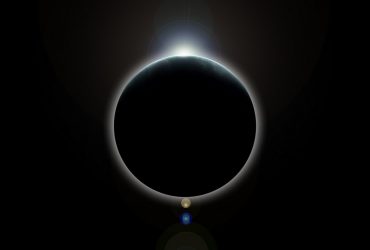Star Coordinates: Learn How To Search For A Star
It’s all very well and good, gazing into the night sky and spotting the huge variety of stars, planets and constellations, but it’s infinitely more pleasurable when you know what you’re looking for, and where to look for it. You can get a general idea about where things are and what you’re looking at from star charts, maps and books on the subject, but the best way to work out where things are in the sky is to find out the star coordinates.
It can seem a bit daunting, when you’re faced with a page full of figures and numbers which are supposed to represent spiritual bodies. But it actually takes very little time to get the hang of it, and it will be so rewarding once you know how to search for a star and find it, based on the star coordinates!
Latitude and Longitude
The first place to start learning how to use star maps is to understand the concepts of latitude and longitude on earth:
- Latitude: This measures how far North or South of the equator a place lies. The equator has a latitude of 0 degrees, the North and South poles each have a latitude of 90 degrees.
- Longitude: This measures how far East or West a place lies. Unlike Latitude there is no physical area to have 0 degrees, so this is calculated to be the circle which runs through the earth’s poles and the Royal Greenwich Observatory in London.
Once you have got your head around latitude and longitude on earth, simply apply these same laws to the sky. Imagine the lines of latitude and longitude were projected onto the night sky, and you will find it all falls into place! The celestial equator lies directly above the earth’s equator, and the celestial North and South poles line up with the earth’s North and South poles.
Declination and Right Ascension
To make things a bit more complicated, celestial latitude and longitude are called different things – declination and right ascension respectively, and are measured differently:
- Declination: The celestial equator, like the earth equator, has a declination of 0 degrees. As you travel North of the celestial equator, objects are marked with a “plus” sign, and as you travel South they are given a “minus”. Vega would be written as +39°, as an example. Each degree in space is split into 60 smaller units, called “minutes of arc” which are marked by a ‘ symbol, and each minute is split further into “seconds of arc”, marked by a “ symbol. As an example of how this is laid out, the more precise coordinates for Vega would be narrowed down into +38° 47’ 01”.
- Right ascension: The celestial equivalent of longitude is measured slightly differently. Because the night sky changes and turns every 24 hours, right ascension is measured in hours. 24 hours represent the full 360 degrees, meaning that each hour is allocated 15° of angular distance. In the same way as degrees in space, each hour is split into 60 minutes and each minute into 60 seconds. To find 0 hours, you will be looking for the circle that runs through the Pisces constellation, where the ecliptic crosses the celestial equator. To find Vega in right ascension you would look for 18h 36m 56s.
Just to add another dimension to the confusion, the coordinates of the celestial bodies changes over the course of the decades. This is due to the earth’s wobble between the Sun and the Moon’s gravitational pull – but don’t panic, this doesn’t mean that all your hard work and star chart homework will be instantly useless.
The star charts are updated about every 50 years, and those currently being used are accurate as of the year 2000, so they will keep going for a while yet!
Conclusion
Stargazing is a truly wonderful hobby. Whether you have gone all out and bought the most expensive telescope money can buy (read our telescope buying guide) and you spend every evening out there rain or shine, or if you are more of a part time heavens-watcher, it is fascinating and very rewarding.
Learning to read star charts and find your own way about the heavens using star coordinates brings a whole new dimension to the experience. With just a bit of patience and learning how to do it properly, you’ll be discovering your own constellations in no time!



